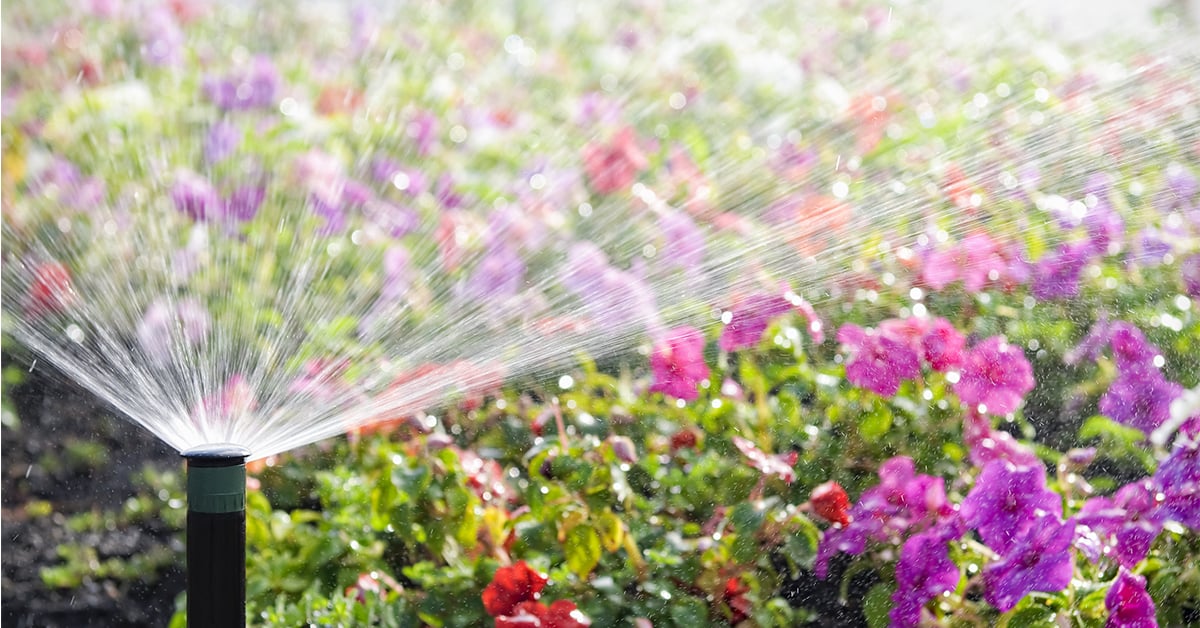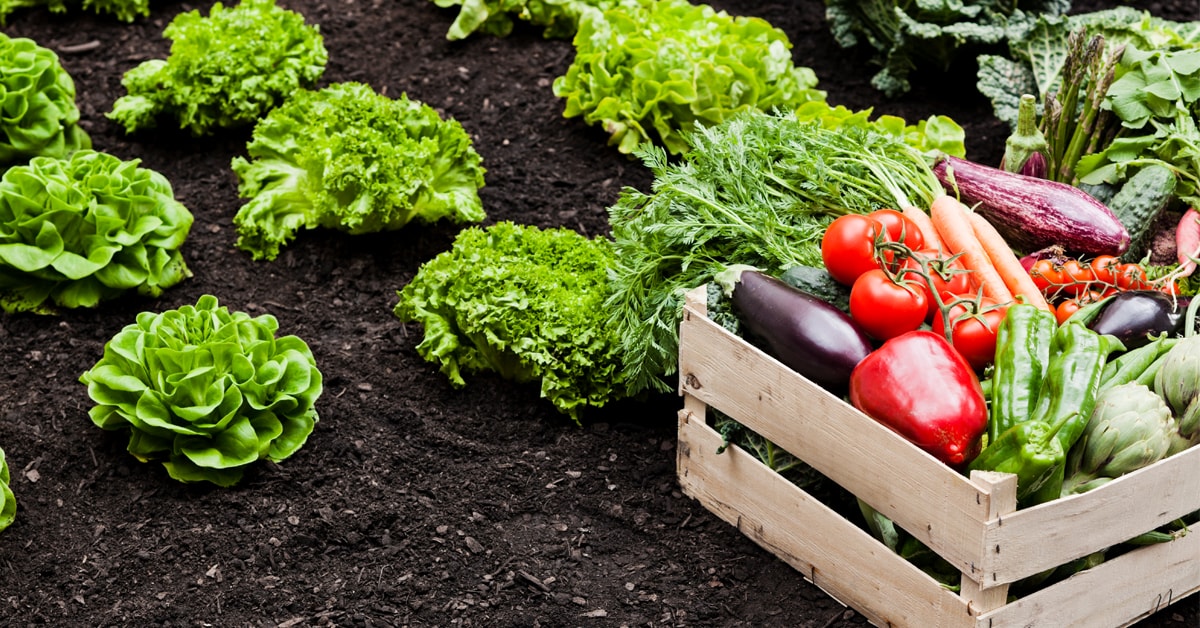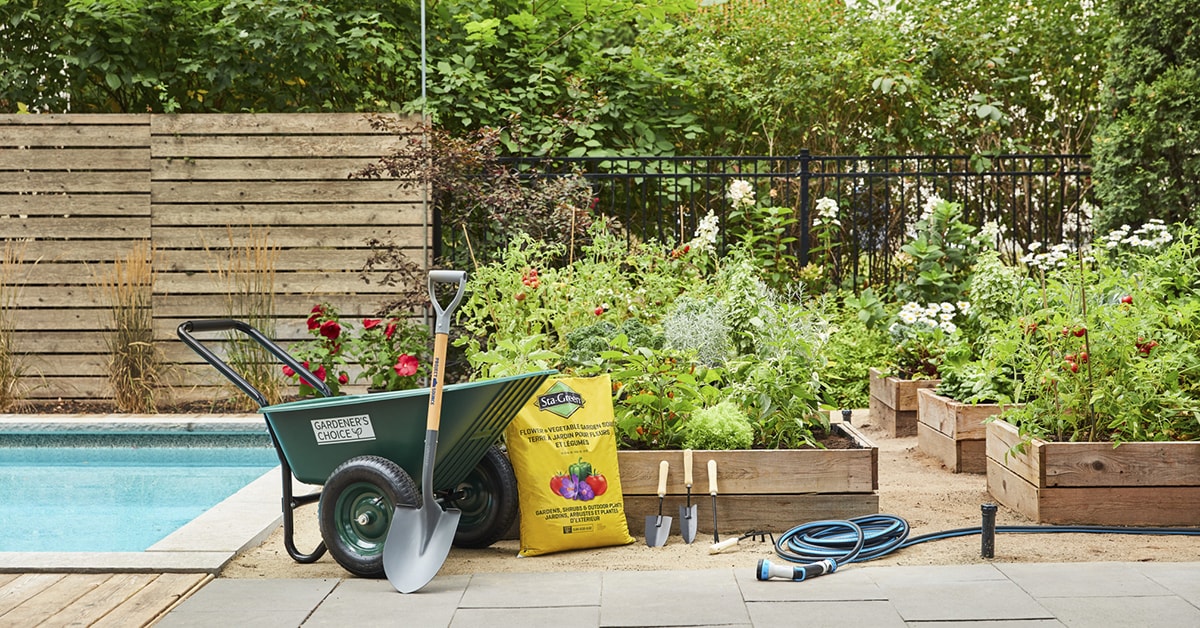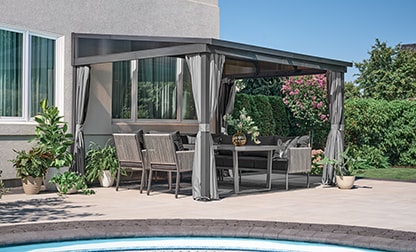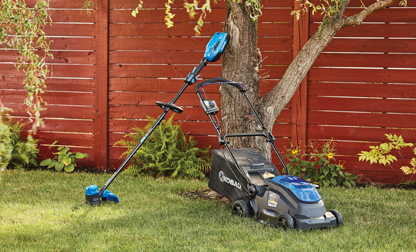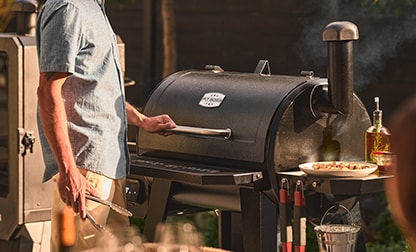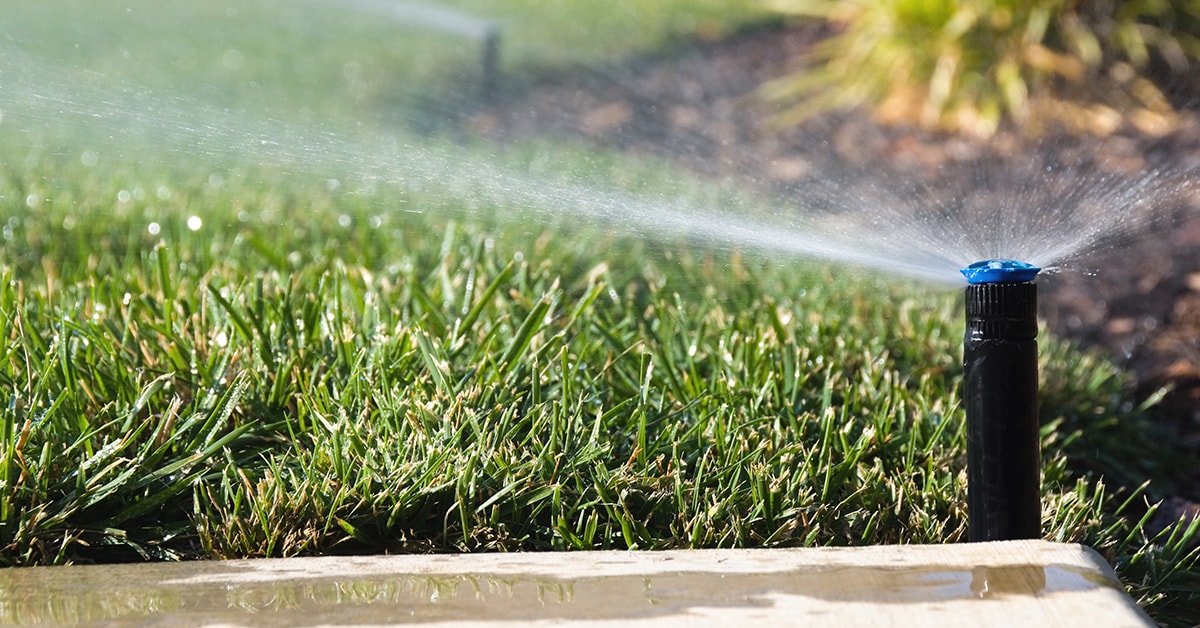
Updated on April 13, 2023
How to Install an Irrigation System: DIY Guide
Do you want to save time, money, and water? And have a gorgeous lawn and garden into the bargain? Take an eco-friendly approach to landscape hydration and install an underground sprinkler system. This project is not difficult, although you will need some plumbing basics.
- If there are any existing regulations governing the installation of irrigation systems.
- If a building permit is required.
- What kind of backflow preventer is recommended.
- If the installation project requires a professional.
Contact all utility companies (gas, electricity, telephone, cable) in your area to find out if there are any buried wires or cables on your property.
The following steps are intended to accompany our guide Planning an Irrigation System. Download and print out the PDF document so you can note all the necessary measurements and information.
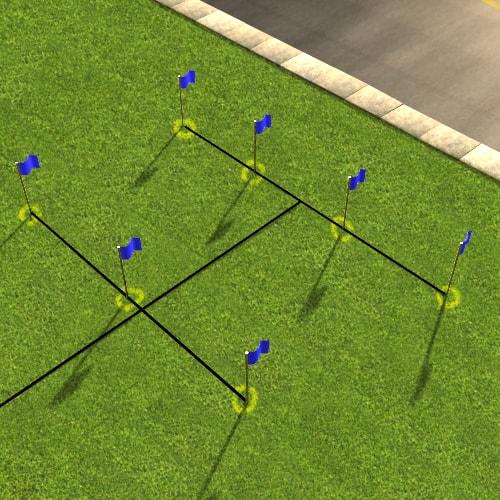
1Map Out the Irrigation System
- 1.1Mark the sprinkler head locations with small flags or stakes.
- 1.2Paint the locations (on the ground) for the sprinkler pipe lines.
- 1.3Verify that the pipe installation will not interfere with underground utilities.
- 1.4Clearly map out each watering zone.
2Install the Backflow Preventer
- 2.1Locate the main water supply line. If below-ground, dig deep enough to expose it. Note that some water supply lines are located in the basement.
- 2.2Shut off the water at the water main. The knob is often located next to the meter.
- 2.3In the house, relieve the water pressure by opening one or more faucets until the water has completely drained.
- 2.4Choose a location downstream from the meter for the new connection for the irrigation system. Clean the exterior of the pipe before cutting.
- 2.5Splice in a T-connector onto the main water line, which can be either PVC or copper. If the main water supply line is copper, solder on a copper T-connector.
- 2.6Glue a 90o PVC elbow onto a male PVC adapter.
- 2.7Thread the adapter into the T - connector installed on the main water line.
- 2.8Install the backflow preventer device according to the manufacturer’s instructions.
- 2.9Dig a trench from the main water supply line to the location for the spigot valve box and install the PVC pipes.
Pro Tip
Certain municipalities require you to hire a professional to ensure that your installation conforms with local building codes (Chapter III, Plumbing, of the Quebec Construction Code and/or local municipal regulations) and the manufacturer’s recommendations.
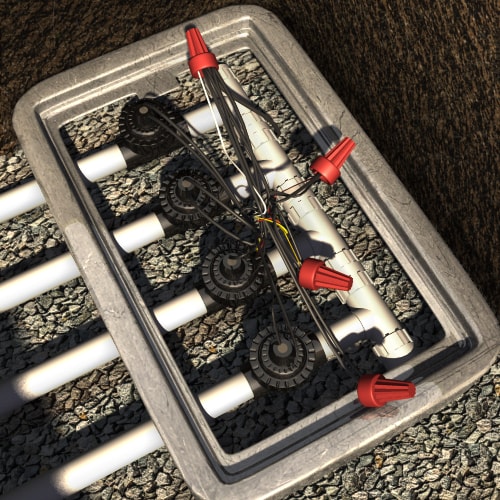
3Install the Box and Pre-Assembled Valve
- 3.1Dig a hole approximately 18" deep and 2’ to 3’ long for the valve access box. The cover of the box should be ground level.
- 3.2Line the hole with 2" of gravel and then set the valve box into the hole.
- 3.3Open the main shut off valve to flush debris out of the main line of the sprinkler system.
- 3.4Install a stop valve to cut the water supply to the irrigation system and the drain valve in order to drain the irrigation lines in the fall.
- 3.5Connect the main water supply line to the pre-assembled valve. The diameter of the PVC pipe must be one size larger than that of the main supply line.
- 3.6Connect a 1" pipe to each valve and run to each designated zone.
- 3.7Dig a shallow trench from the valve box to the location for the timer. Lay out the 24-volt underground wire in the trench.
4Assemble the Pipes
- 4.1Assemble PVC piping:
- Apply PTFE (Teflon) tape to the threaded (male) pipe end.
- 4.2Glue the PVC pipes:
- Clean the pipe end and the inside wall of the connector collar.
- Apply PVC primer to the ends, both inside and out.
- Apply PVC cement everywhere primer was applied. The primer and cement combine to weld the pieces of PVC together.
- Insert the pipe end into the connector using a twisting motion and hold the assembly in place for at least 30 seconds.
- Wipe off any excess solvent.
- Allow the pipe to dry for at least 15 minutes before allowing water to pass through
- 4.3Assemble polypropylene piping:
- Slide stainless steel adjustable clamps over the ends of the pipes to be connected.
- Connect the pipes.
- Tighten the adjustable clamps.
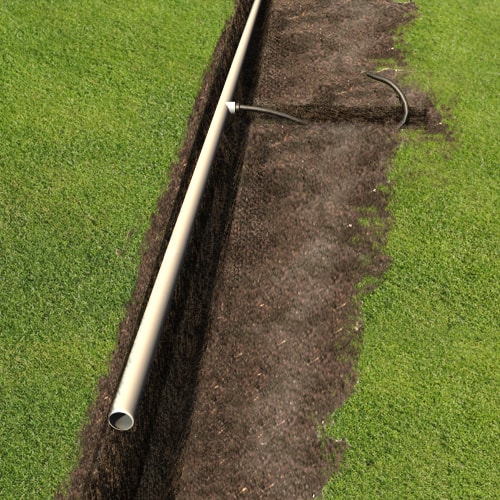
5Install the Pipes
- 5.1Dig trenches along the lines painted on the ground: 12" deep for the header line and 6" for the lateral lines.
- 5.2Install the PVC pipes for 100% coverage over all (watering) zones.
- 5.3Use connectors to join pipes.
- 5.4Install tees and elbows at all sprinkler locations.
- 5.5Install caps at the ends of header and lateral lines.
Pro Tip
Remove soil and sod from the trenches onto a tarp to make filling and patching easier once you’re finished.
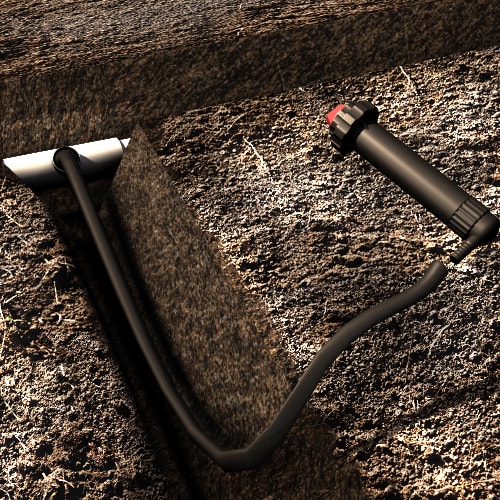
6Install the Sprinkler Heads
- 6.1Install risers at each sprinkler head location.
- 6.2Connect each sprinkler head to the appropriate riser.
- 6.3Adjust the sprinkler head to the correct height in relation to the ground around it.
- 6.4Fill in with sufficient soil to temporarily stabilize the sprinkler heads.
- 6.5Turn on the main valve to test the system.
- 6.6Manually turn on each individual valve one at a time to check for leaks.
- 6.7Make sure the sprinkler head spray radii are large enough to overlap.
- 6.8Turn off the main valve.

7Install the Timer
- 7.1Remove power before undertaking any connection procedure.
- 7.2Secure the automatic timer to the exterior wall of the house.
- 7.3Strip the insulation from the ends of the 24-volt wires that lead from the zone valves to the timer.
- 7.4Connect one wire from each valve to the white (common) sprinkler wire.
- 7.5Connect the 2nd wire from each valve to a separate-coloured wire.
- 7.6Before wiring the sprinkler timer into the system, disconnect it from the power source.
- 7.7Connect each coloured sprinkler wire to a separate numbered terminal on the timer.
- 7.8Connect the white (common) wire to the common terminal on the timer.
- 7.9Restore power to the timer.
- 7.10Test the wiring by manually running each station from the timer.
- 7.11Set the timer and run a test to make sure that each zone and all the sprinklers are operating properly.
Important
In Québec, any connection to the electrical supply box must be completed by an electrician.
8Bury the Pipes and Valves
- 8.1Check all connectors, fittings, heads, and valves for leaks.
- 8.2Adjust each sprinkler head to the proper level as recommended by the manufacturer. Generally speaking, sprinkler heads should not extend more than 1" above ground.
- 8.3Adjust each sprinkler head for the proper spray pattern and spray distance.
- 8.4Cover the pipes with the soil removed for the trenches then either replace the sods or reseed.
- 8.5Protect the valves with weather-resistant boxes.
Irrigation System Maintenance Tips
To make sure your irrigation system holds up to normal wear while keep your lawn green and lush:
- Regularly clean your sprinkler system.
- Keep an eye out for problems (e.g., soggy or dry lawn, puddles, eroding soil, damaged material).
- Adjust sprinkler heads when they point in the wrong direction.
- Make seasonal adjustments to the water output, as needed.
- Winterize the system before the first frosts. See the end of our guide Planning an Irrigation System for more information.
Disclaimer
These DIY projects are provided for informational purposes only. The information contained in RONA’s DIYs is intended to provide general guidelines to simplify jobs around the house. Because tools, products, materials, techniques, building codes, and local regulations are continually changing, RONA inc. assumes no responsibility for the accuracy of the information contained herein and disclaims any liability for the omissions, errors, or outcome of any project. RONA inc. makes no representation on the feasibility of any project and the viewer bears all risks coming with the realization of the projects. It is the responsibility of the viewer to ensure compliance with all applicable laws, rules, codes, and regulations for a project. The viewer must always take proper safety precautions and exercise caution when taking on any project. If there is any doubt in regard to any element of a project, please consult a licensed professional.









